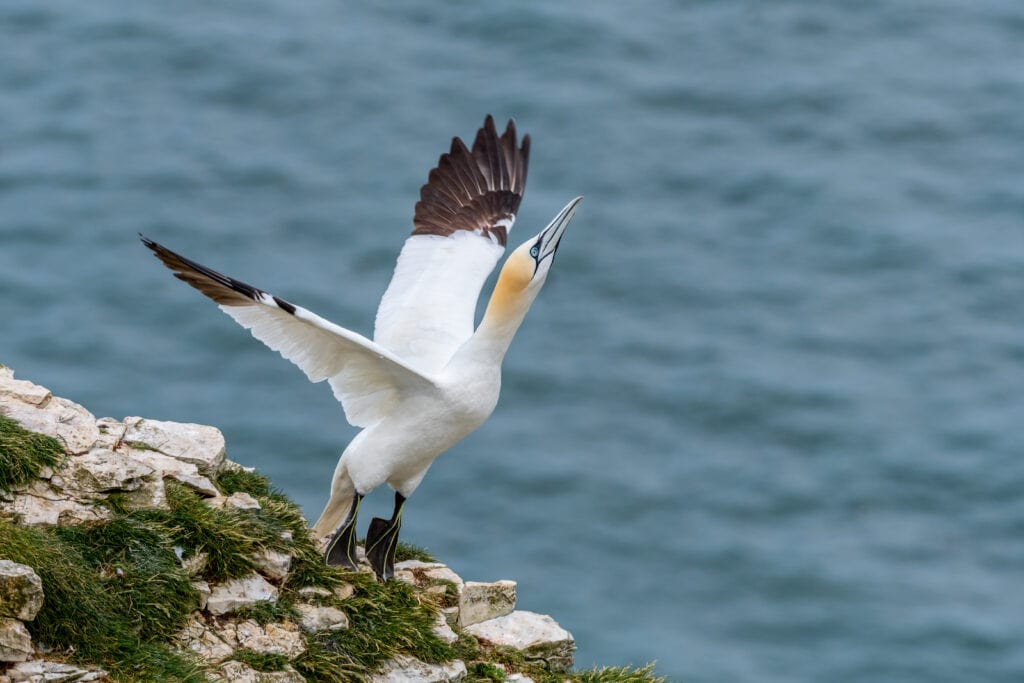Gannets are large seabirds belonging to the Sulidae family, the same family as the charismatic Blue-footed Booby. Although they are strikingly beautiful, bearing some resemblance to Albatrosses, Gannets are often associated with gluttony and thievery. This reputation is misplaced and doe snot reflect the behavior of these birds, but the association persists.
Related Article: Osprey Nest in Ireland is the First in Centuries
A recent discovery, however, might allow some people to see the Gannet in a new light. In the United States, Gannets are found along the Atlantic coastline from the Gulf of Mexico all the way up north to Newfoundland and Labrador. As it turns out, Gannets have occupied the Atlantic coast of North America for as many as twelve million years.
Solomons Island in Maryland is home to a stretch of coastal cliffs called the Calvert Cliffs. These rocky cliffs which rise over the Chesapeake Bay are a hot spot for fossil hunters. Fossilized shark teeth are a particularly common draw for amateur paleontologists, but last month a discovery was made at the Calvert Cliffs that is making history.
A museum volunteer at the Calvert Cliffs noticed what looked like bird bones embedded in the rock. He collected the chunk of rock, assuming that he had found the fossilized remains of a bird. What he did not know was that this would turn out to be the twelve million year old fossilized bones of a Gannet.
Gannet bones have been found in the area of the Chesapeake Bay before, and it has been observed that the region was home to an extinct species of Gannet during the Miocene Epoch. In previous cases, bones have been a source of celebration because bird bones are hollow and are not easily preserved. Even very small avian fossils are a rarity.
This is precisely the reason that the Calvert Cliffs Gannet fossil is such a special find. This fossil was found partially intact with the skull largely undamaged. This is the most complete bird fossil to ever come out of the Calvert Cliffs.
Because intact bird fossils are so very rare, it is likely that this find will provide new insights into the biological history of the Gannet, as well as the Atlantic coasts of North America themselves. At the very least, this remarkable find proves that this bird’s relationship with the Chesapeake Bay is at least twelve million years old. It is a reminder of the shared unspoken and unrecorded history that this planet’s wildlife shares with the land.
Popular Article: Disappearing Sea Ice Spells Disaster for Emperor Penguins

